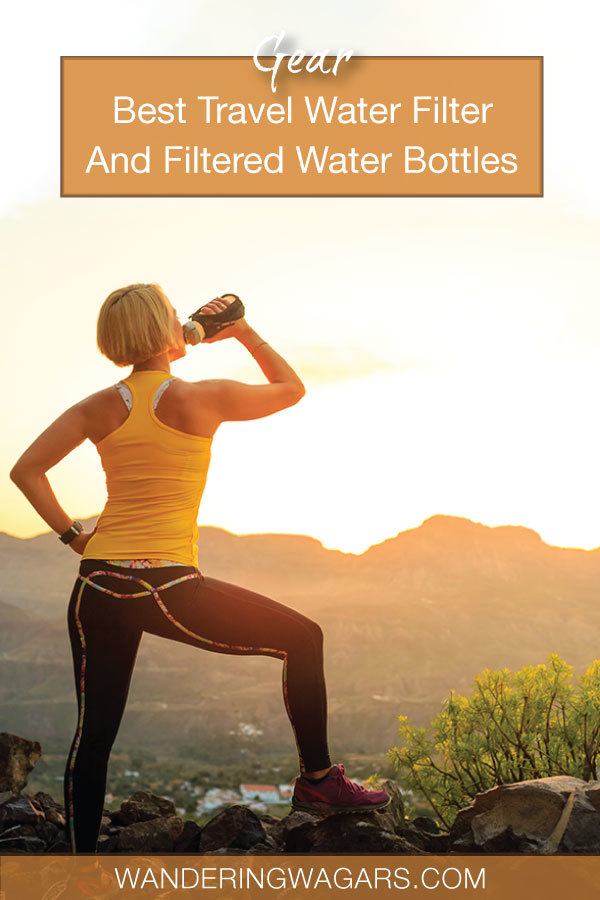34Views 0Comments

The Best Travel Water Filters To Keep You Healthy On The Road in 2025
Find the best travel water filters for 2025. These portable water filter brands give you clean, purified water while you travel.
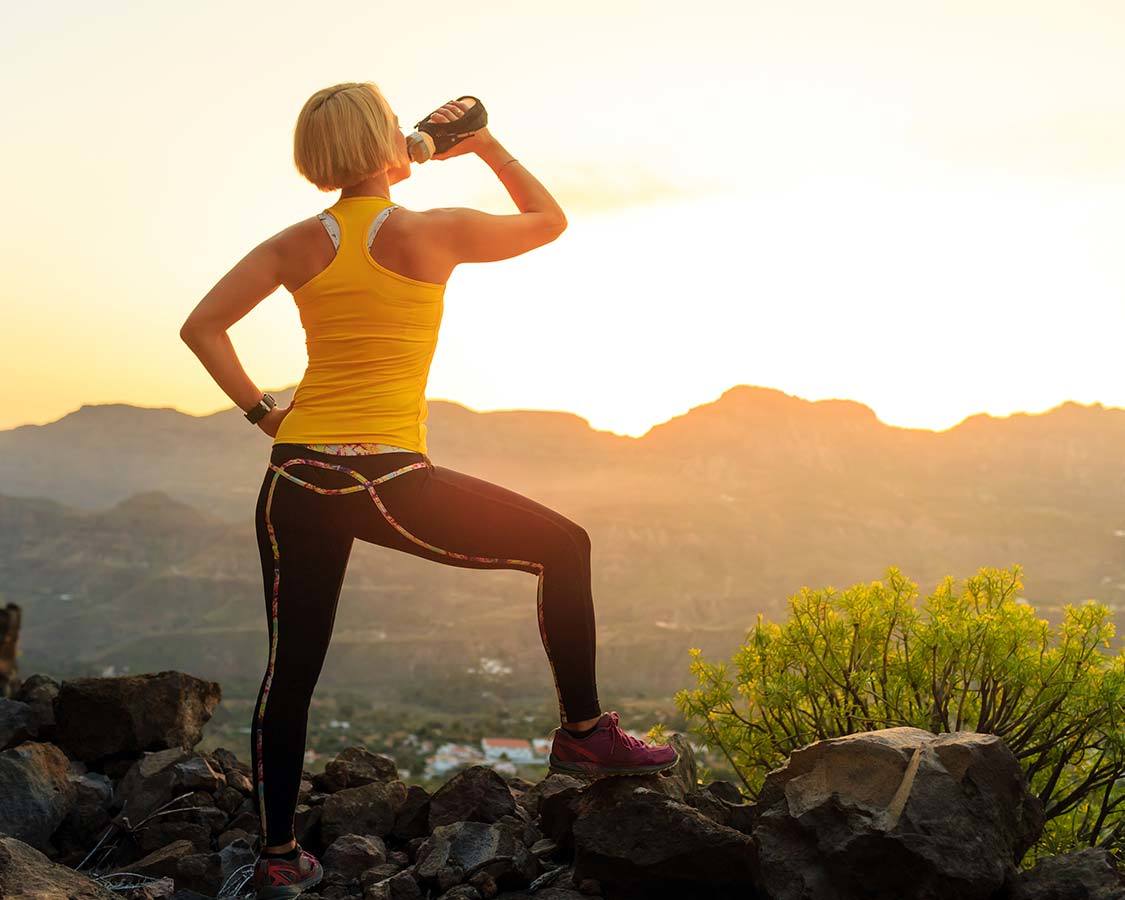

Finding the balance between clean water while hiking and traveling and maintaining a sustainable ecological footprint can be a challenge. Disposable water bottles are not only unwieldy, but they are also a huge contributor to pollution and waste.
Travel water filters and portable water purifiers offer a convenient and environmentally friendly alternative to purchasing bottled water for those who hike, camp, or travel. Ready access to clean water is also an essential part of staying healthy while traveling.
In this guide to the best travel water filters, I’ll explain the difference between water filters and water purifiers and share which water filter products I recommend based on the type of adventurer that you are.
Water purifiers offer the benefit of clean, safe water on demand. And they do this while minimizing ecological damage. If you travel to off-the-beaten-path destinations, they can also help ensure that these bottles don’t end up in the trash, where advanced recycling infrastructures likely don’t exist.
Travel water filters come in many different forms, but the ones that I recommend here will ensure that you have clean, fresh-tasting water, which won’t leave you with a bad case of Delhi Belly.
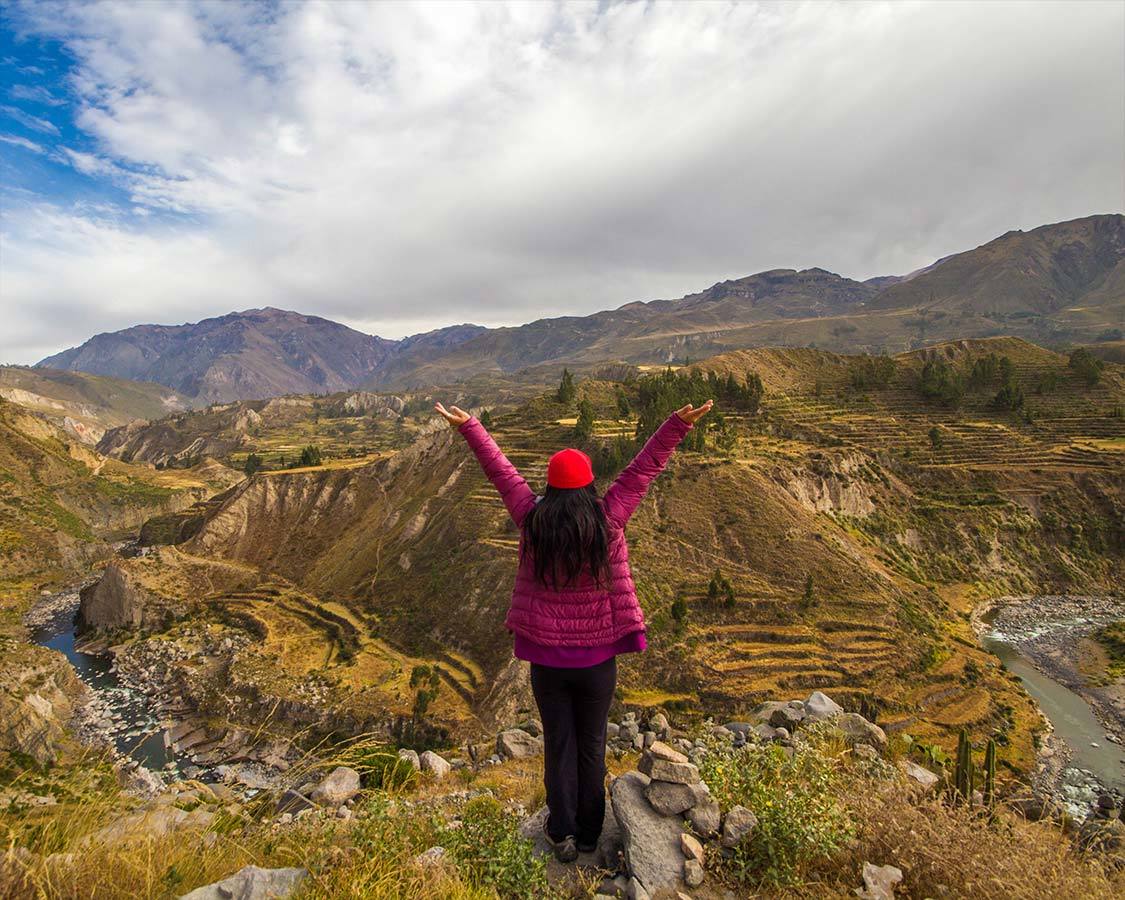

Why Trust My Opinion On Filtered Water Bottles?
I have spent much of my adult life traveling the world. I’ve adventured everywhere from the far north of the Arctic Circle to remote Guarani villages in Argentina and everywhere in between.
When I became a Dad back in 2011, those travels didn’t stop. They just got more intense. Becoming a Dad simply reinforced my need to keep my family safe during our remote travels and outdoor hiking and camping adventures.
I use travel water filters not just as a way to reduce my impact on the environments that I’m visiting, but also for the convenience of having fresh and clean water at my disposal almost everywhere, and to keep myself and my family safe from bacteria and viruses that can be found in unknown water sources.
During our travels, we’ve been in our fair share of places where finding clean water was a challenge. And when traveling in countries without drinkable water, travel water purifiers have been, literally, a lifesaver.
Travel water purifiers are small, easy-to-use, and offer an even healthier alternative to bottled water, even when taken from the nastiest sources of water. The number one rule when traveling to many countries is “don’t drink the water.” A travel water purifier can change that.
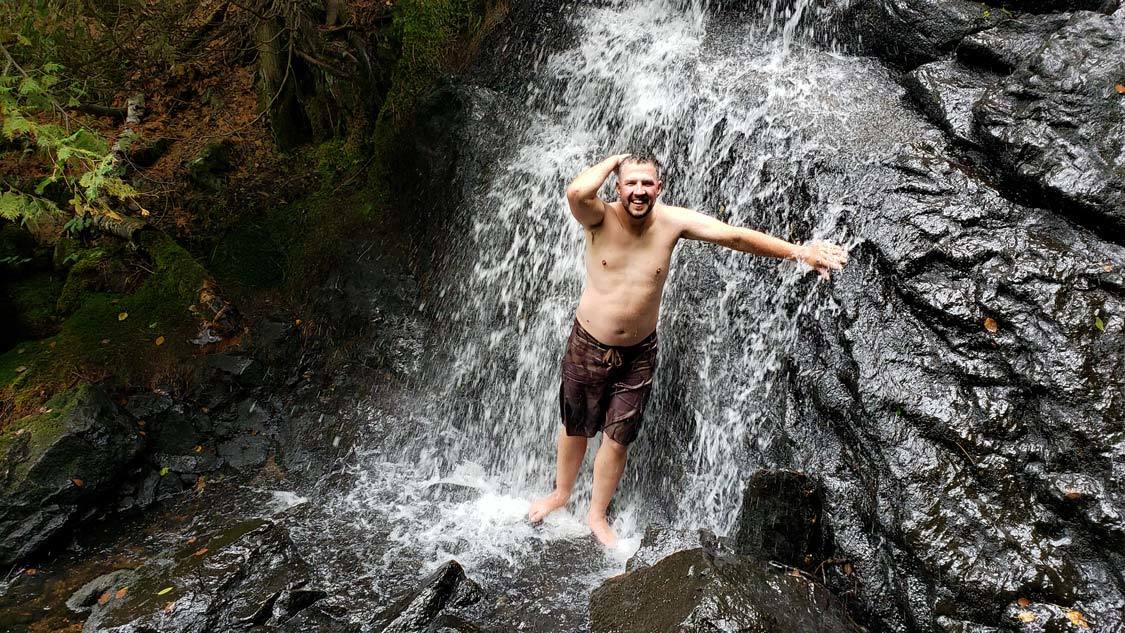

The Best Water Filters and Water Purifiers
I know that time is short, so if you don’t have time to read my in-depth reviews of the best water filters for travel, camping, and hiking, I’ve laid out my top picks along with my main weighting factors when choosing the best travel water filters in this chart below.
If you’d like to see more information on each one of these products, keep scrolling, and you’ll find a detailed breakdown of what makes each water purifier product good, and the pros and cons of going with that particular model.
GRAYL Ultralight
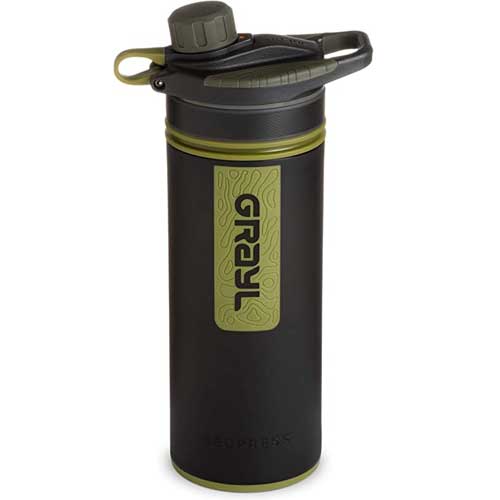

The Grayl Geopress travel water purifier is a straightforward, convenient, and feature-packed filtered water bottle. The integrated water bottle and filter make the Grayl Geopress one of the most popular water purifier filters for professional adventure travelers.
Using the Grayl Geopress
To use the GRAYL water filter, you simply fill the bottle, press the inner filter down, and then drink the clean water directly. It’s fast, easy, and doesn’t involve waiting minutes or sucking from a narrow straw filtration system. The portable water purifier cleans out 99.99% of waterborne bacteria and viruses. The unit works very much like a French coffee press. The whole process only takes about 30 seconds before you can drink freely from the bottle.
Cons of the Grayl Geopress
There are limitations to the GRAYL Ultralight. The first is capacity. The filter takes up quite a bit of room in the bottle. Because of this, each fill-up can only hold about 16oz (>500 ml) of water. This means that you may have to fill up often, especially when it’s hot. It also means that if you’re in dry areas, you can’t carry a lot of water with you.
Another limitation of this unit is the cost of the GRAYL Ultralight filter refills. Each filter is good for about 30.6 gallons (150 liters). But the rock-solid performance and tried-and-tested nature of the product make the GRAYL Ultralight a solid, convenient, and all-around great choice.
SurviMate Filtered Water Bottle
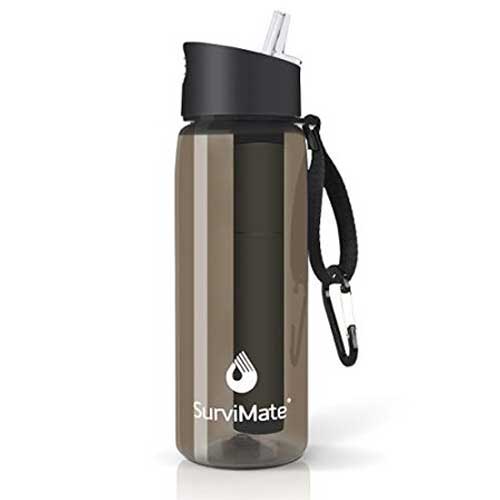

The SurviMate filtered water bottle is built to take on any situation. This travel water filter can handle anything from urban travel to the Ganges with a combination of four unique filters that help you adapt to any travel circumstance.
The SurviMate replaceable filters last an impressive 8 months. This means that you don’t have to have filter angst on your adventures. You can just enjoy some fresh, clean water wherever you are.
Using the Survimate Filtered Water Bottle
The features of the Survimate travel water bottle filter include a UF membrane filter, a coconut shell activated carbon filter, antibacterial beads, and a medical-grade PP cotton filter. This combination gives this travel water filter the most comprehensive portable water filtration system on the list. The filter eliminates heavy metals, harmful chemicals, viruses, bacteria, and protozoa. And the replacement filters won’t break the bank either.
This is done using a straw-style filter. The raw water goes into the water bottle and you simply suck through the straw. As the water passes through, impurities are captured in the filtration system and you only receive fresh, clean water in your mouth.
Cons of the Survimate Water Filter
The Survimate filtration system is one of the best on the market. The filters are excellent and relatively inexpensive, especially compared to the Grayl system. However, where the Survimate hits a wall is its ability to deliver fresh, clean water quickly.
Because it uses a narrow, straw-style filtration system, drinking the water requires quite a bit of suction. And you won’t get a lot of water at a time. This means that drinking is quite a bit of work and less enjoyable than a system like the one from Grayl.
LifeStraw Go Water Filter Bottles
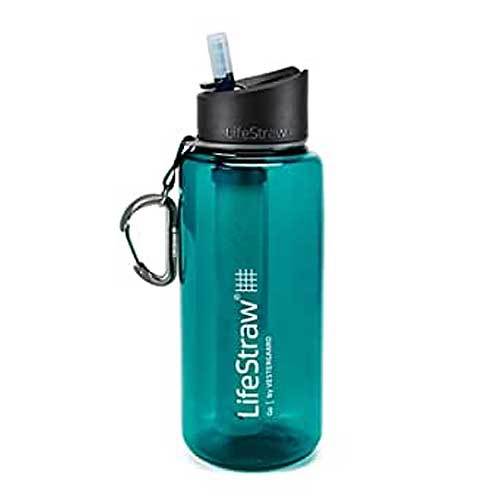

LifesStraw is one of the most established names in portable water filtration. They’ve adapted their unique water filter straw design into various formats. Many of these are focused on the travel water filter market. I’ve tested several Lifestraw models and found that the LifeStraw Go seems to offer the best combination of functionality and convenience for travel lovers.
Using the Lifestraw Go
Lifestraw Go is a 22-fluid-ounce water bottle with an integrated LifeStraw filter. The bottle can be used with or without the filter. This means that you don’t need a separate bottle for when you’re in an area with good, clean drinking water.
You can also remove the straw itself and use it to drink water directly from a water source without using the bottle at all. This is perfect for those looking to cut down weight and bulk in their packs, such as on backcountry expeditions.
The filter itself uses activated carbon to filter out 99.9% of bacteria and organisms while also lowering the amount of chlorine, odor, and aftertaste.
One thing I love about the LifeStraw Go portable water filter is the lifespan of the filtration unit itself. One filter is good for a whopping 4,000 liters (1,056 gallons) or 3 months.
Cons of the Lifestraw Go
On paper, the Lifestraw Go should be hands-down the most economical travel water filter on the market. However, because the filter is two-stage, the LifeStraw carbon stage filter that removes chlorine and odor particles is only good for about 100 liters.
This isn’t a deal-breaker, though. At only about $10 USD for a two-pack, this isn’t a major expense. And the design means that this part of the unit is incredibly small, so packing a few of them for a long trip isn’t too hard.
Brita Water Bottle with Filter
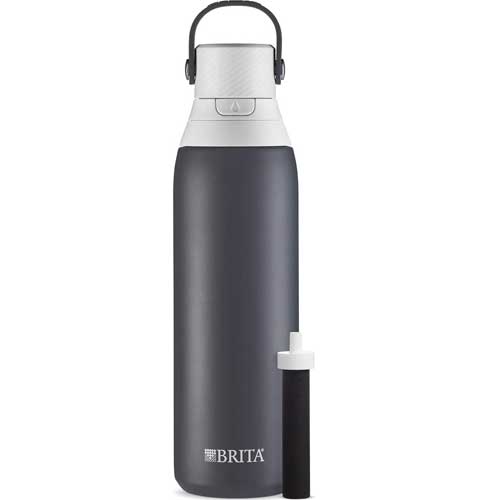

From the makers of your favorite fridge water filter comes the clean, convenient, and stylish Brita filtered water bottle. Brita has been making filters for decades, and they’ve found a new market in travel water bottles. These water bottles with filters are lightweight and easy to carry. The unit uses an activated carbon that not only removes pollutants and bacteria but also removes unwanted taste and odor.
Using the Brita Filtered Water Bottle
The Brita filter is tiny. This means that it doesn’t take up a lot of the water space within the bottle itself. That means more clean, delicious water between fill-ups. And it works very well.
The flip-open straw is easy to drink from. And it offers great flow compared to some of the other straw-style water filters. One portable Brita filter cleans as much water as about 300 disposable water bottles.
Cons of the Brita Water Bottle
I love the taste and convenience of the water that comes out of the Brita. However, with its traditional straw style, I’d love for this unit to be able to be used directly without the bottle. Unfortunately, that is not the case. This means that the Brita is not ideal for ultralight hiking or camping.
What About Chemical and UV Travel Water Purifiers?
This guide focused primarily on travel water filters rather than typical water purifiers and tablets. The reason for this comes down to things like taste, sendiment, and the ability to work without batteries.
Chemical water purifiers work to kill micro-organisms, bacteria, and things like Giardia in water. However, they are unable to eliminate things like sediment and bad taste. I tend to drink a lot of water when I travel, so I like that experience to be enjoyable.
Ultraviolet water purifiers act as a non-chemical alternative to chemical water purifiers. They tend to be safer, as they don’t rely on chemical interactions, and they are better for the environment. However, they require power, so this means extra batteries on long trips.
Honorable Mentions: Water Filters, UV Purifiers, and Chemical Purifiers
There are other products on the market than what I’ve mentioned earlier. Those are simply my selection for the best filtered water bottles. Depending on your situation, these units might also work well for you.
Best Travel Water Purifier For Urban Travelers
Steripen Ultra
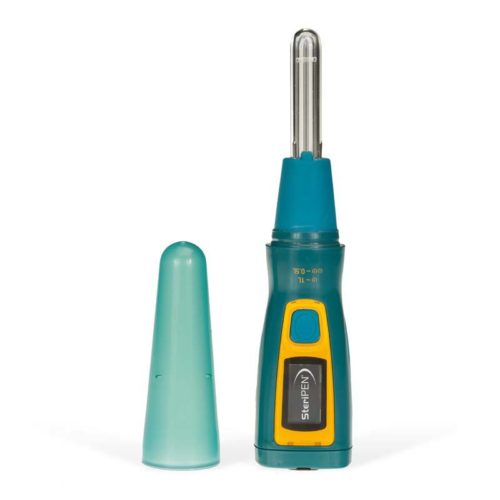

The Steripen Ultra uses a UV lamp to kill and disinfect drinking water. Unlike filtered water bottles and straws, you simply dip the lamp into a water bottle or cup, shake or stir for a couple of minutes, and drink. This unique travel water purifier runs on a battery charged via USB. But because of the UV format of this unique water purifier, there are limitations to its abilities.
Due to the UV lamp, the Steripen Ultra is not a travel water filter. Instead, it acts only to purify the water that the lamp is dipped into. Because of the lack of a filter, particulate matter like dirt and sediment can remain in the water.
The UV lamp of the Steripen Ultra kills nearly all bacteria and viruses within the water. Because of this, the purified water is unlikely to cause any illness. However, it may leave the water cloudy and/or dirty to look at.
The other limitation of the Steripen Ultra is that it relies on battery power. This means that, should you be on an extended remote trip with limited or no access to power, you could be left high and dry.
Some of the cheaper versions of the Steripen use disposable batteries; however, this means you have to remember to carry batteries with you when you travel.
If you are traveling in areas where water is fairly free of sediment, the Steripen Ultra is a nice, easy travel water filter to carry with you. It also doesn’t have a limit to the quantity of water it can purify beyond the battery life.
Best Travel Water Filter For Backcountry Camping And Hiking
Survivor Filter Pro
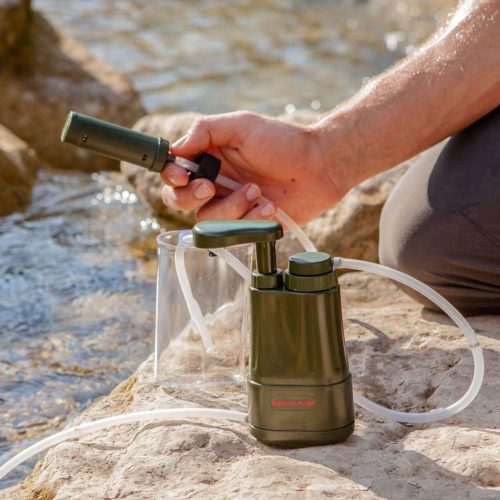

If you’re looking at spending some time on long hiking or camping excursions, having a camping water filter that can be a workhorse without being heavy or bulky is a blessing.
This is where the Survivor Filter Pro comes into play. This small and lightweight (just 8oz or 266 grams) has a three-stage filter that can handle more use than any other water filter on this list. The carbon filter can filter 440 gallons (2,000 liters). The other two filters in the chain can handle a whopping 22,000 (100,000 liters).
The Survivor Filter Pro isn’t super fast. It takes about two minutes to filter 34 oz (1 liter) of water. However, because the Survivor Filter Pro is meant as a portable water filter for those doing longer excursions, it’s ideal for that environment.
The unit is priced well, and the hand pump makes it very easy to use. The biggest limitation of this portable water filter is the tube input. This can get clogged when filtering water from especially dirty sources, and can be awkward to use from a tap.
What You Need To Know Before Choosing A Filtered Water Bottle for Travel
How Water Filters Work
Portable filtration systems are designed to clean water on the go. Whether this is by filtering directly as you drink, or filtering small amounts of water at a time, for you to easily drink afterward. Water filtration systems use a series of filtration and sterilization techniques to accomplish this. These setups can change from one manufacturer to the other, so don’t assume that all portable water filters are the same. Here are some of the basics about what makes up a travel water filter.
Active Carbon Filter
Active carbon filters are one of the most common and effective methods of removing impurities from water sources. Activated carbon, also known as activated charcoal, uses porous carbon to trap impurities. Because of this, it has a limited amount of filtration capacity.
Activated carbon filters generally need to be changed more frequently than other filter types. Occasionally, you may notice black flecks floating around in filtered water. These are actually flecks of carbon, and they are completely harmless.
Activated charcoal has been processed to become incredibly porous. These tiny pores act to filter particulate impurities from water sources, allowing clean, pure water to course through.
Ultraviolet Light
UV light filters are relatively few and far between for portable water filtration systems. This is usually because it takes time to purify water using ultraviolet light and because the system relies on a power source. UV light actively kills bacteria, protozoa, and viruses via germicidal radiation that is harmless to humans.
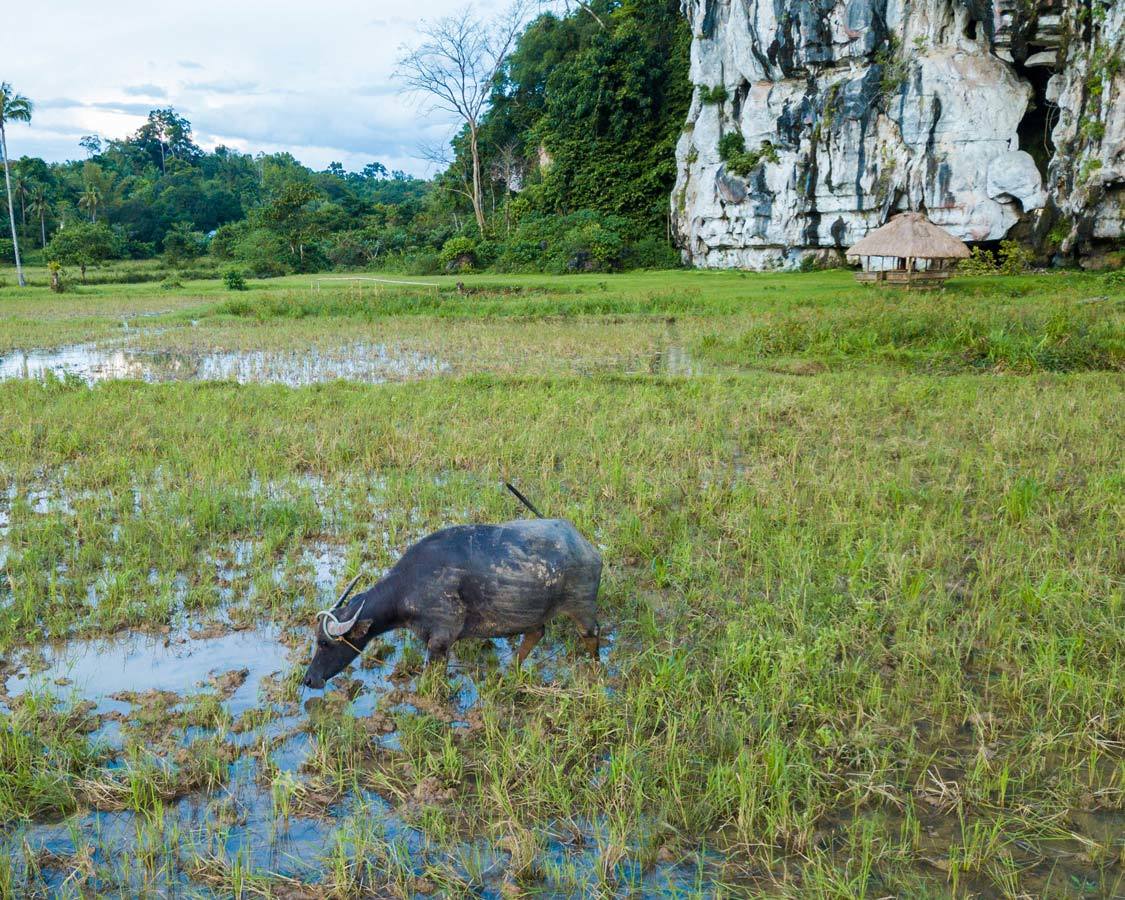

Benefits and Disadvantages of Travel Water Filtration Systems
If you’re interested in purchasing a water filter for travel, there are both advantages and disadvantages to using them. I’d love to say that everything is rosy and you’re life will instantly be perfect after choosing a travel water purifier. But there are some things you’ll need to get used to when using one.
Advantages of a Travel Water Filter
- Protecting the Environment – This is by far the most important reason for choosing a water bottle filter for travel. By using one, you are potentially eliminating thousands of plastic water bottles that will otherwise end up wasting energy in recycling facilities, or worse, ending up in landfills, or in the oceans.
- Economic Value – The other advantage of not having to buy disposable water bottles is money. Replacement filters are far more affordable than disposable water bottles. Investing your money in a water filter for travel means investing money in those trying to save the world rather than those causing the problems.
- Practicality – Having a portable water filter on hand means that you have access to clean water anywhere you go. If there isn’t a store nearby, just look for the nearest puddle, stream, or lake. No more stocking up on bottles; Just filter the water and drink.
- Convenience – If you are in remote areas, a water filter saves the time it takes to boil water. Getting clean water doesn’t mean starting a fire, getting water, waiting for it to boil, and then waiting for it to cool down enough for you to actually consume it. Water filters also eliminate the need for disinfection tablets.
Disadvantages of a Filtered Water Bottle
- Weight – Even the best-filtered water bottle is heavier than a non-filter alternative. I think the benefits far outweigh the weight issue, especially when you consider the amount of gear you need to carry to boil water.
- Speed – Many travel water filters that use a straw system take time to drink, consume, or filter. It’s not as fast as just pouring water from a tap and shooting it down the hatch. LifeStraw products, for example, require a bit of work to suck through.
- Size – A filtered water bottle is generally designed to filter water in small amounts at a time. Because of this, it’s rare for one to hold more than about 24 oz of water.
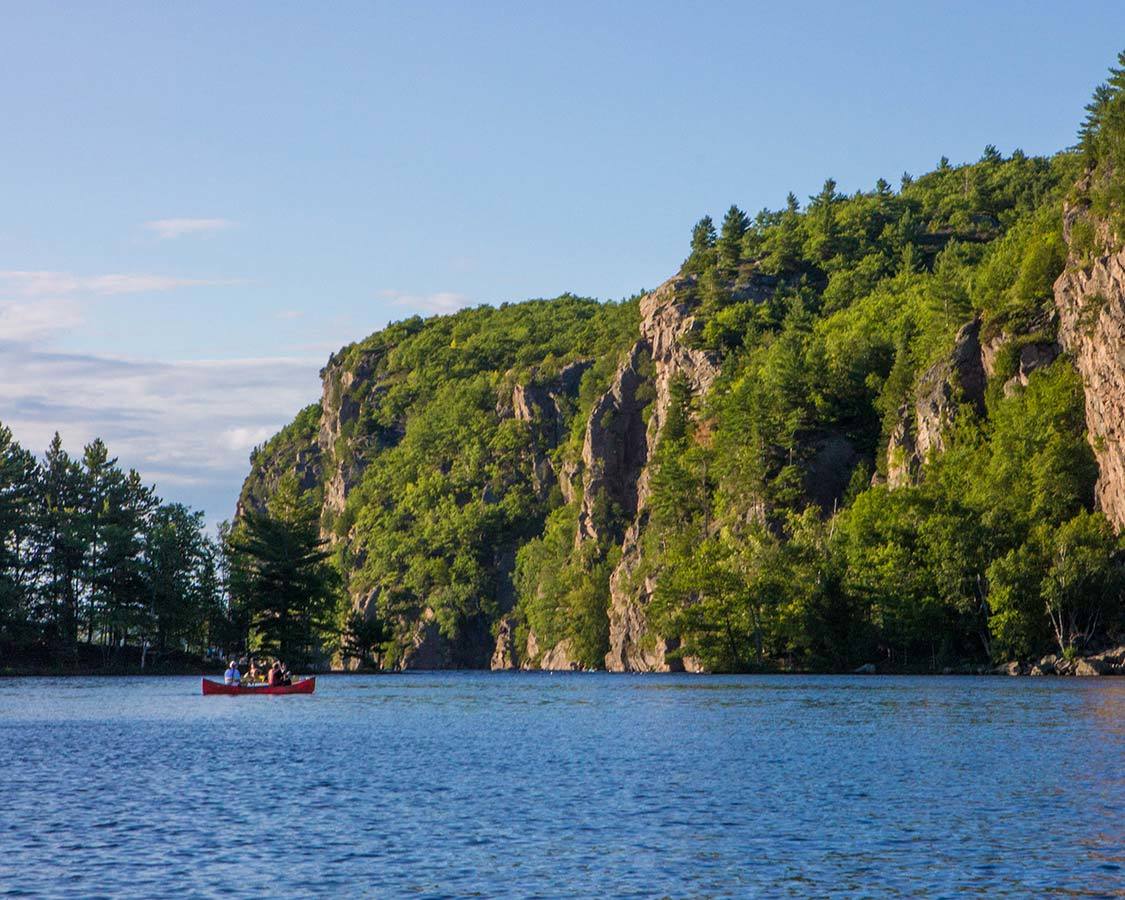

Which Travel Water Filter Should You Buy?
When all is said and done, my personal choice for the best travel water filter is the GRAYL Ultralight. I rarely travel to destinations where I’m more than a short distance from a water source. Because of this, the small capacity of the GRAYL model is outweighed by its portability and durability. I’m not a big fan of sediment in my water, so I like that this filtered water bottle cleans out particulates.
The integrated bottle and filter also make carrying and using it a cinch. And the push filter method is far more practical for my uses than having to take hard sucks from a straw-based water filter.
Do you carry a travel water filter with you? Let me know your favorite model in the comments below, and tell me why you love it. You can also swing by our Facebook page and share a photo of your travels. We would love to hear from you.
You May Also Like To Read:
Pin This Post For Later:
